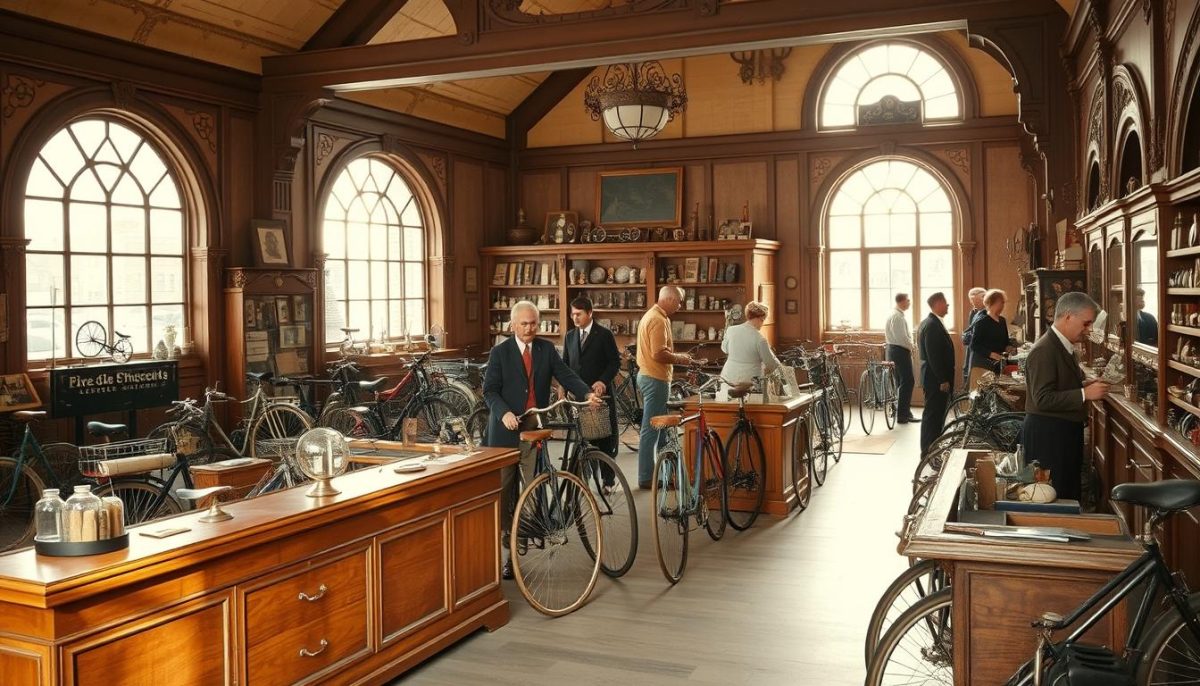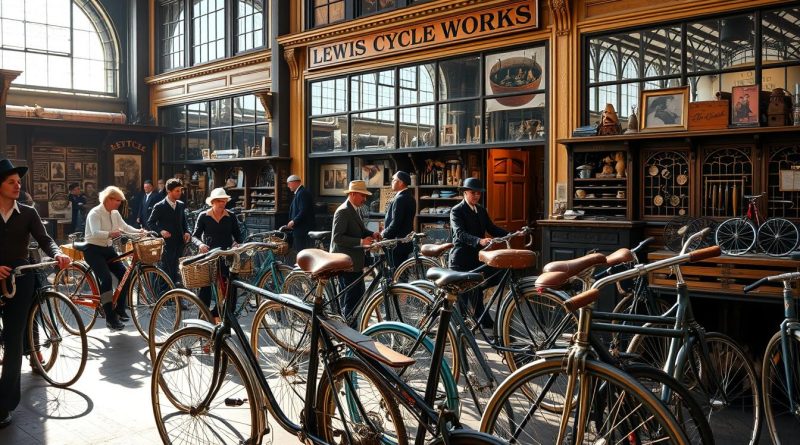The Ormonde Bicycle Depot and the Lewis Cycle Works 1893
In the realm of 1893 cycling history, the opening of the Ormonde Bicycle Depot and the Lewis Cycle Works marked a transformative shift in bicycle manufacturing and sales. These establishments quickly became synonymous with quality and innovation, catering to the growing enthusiasm for vintage bicycles among both competitive and recreational cyclists. Specializing initially in traditional models, the Depot soon embraced the changing landscape of cycling innovations, making it a hub for enthusiasts. Community events and races hosted at this pivotal location helped foster a vibrant cycling culture, inspiring countless individuals to take up the sport.
The History of The Ormonde Bicycle Depot
The founding of Ormonde Bicycle Depot marked a pivotal moment in the early cycling heritage. Established by passionate enthusiasts in 1893, the Depot aimed to serve a dual purpose: to provide high-quality bicycles and accessories as well as to create a community hub for cyclists. The Depot’s vision extended beyond mere commerce, focusing on educating the public about cycling safety and maintenance. This nurturing environment played a crucial role in fostering an enduring interest in cycling.
Founding and Purpose
The purpose of the bicycle depot was straightforward yet impactful. It sought to promote cycling as a viable means of transportation and leisure. By gathering like-minded individuals, the Depot not only sold bikes but also encouraged camaraderie among cyclists. Participants learned about the technical aspects of their bikes, participated in workshops, and engaged in discussions about the cycling culture burgeoning around them. This strong community connection laid the groundwork for many of the milestones of Ormonde Bicycle Depot in the years that followed.
Significant Milestones through the Years
Throughout its existence, the Ormonde Bicycle Depot has celebrated numerous significant milestones that helped define the landscape of cycling history. Some notable achievements include:
- Introduction of early safety bicycles in the late 1890s, which made cycling more accessible for the general public.
- Active participation in organizing local cycling events and races, enhancing community engagement.
- Incorporation of innovative materials and designs in the 1920s, showcasing adaptability to contemporary trends.
- Continual response to various cycling boom periods, ensuring relevance in an evolving market.

The rich cycling history of 1893 at Ormonde Depot established a legacy that continues to inspire future generations of cyclists. Each milestone contributed to creating a vibrant, enduring cycling community, promoting not just the sport, but a lifestyle that embraces health, socialization, and enjoyment of the outdoors.
The Ormonde Bicycle Depot and the Lewis Cycle Works 1893
The partnership between the Ormonde Bicycle Depot and the Lewis Cycle Works played a pivotal role in advancing bicycle innovations during the late 19th and early 20th centuries. Their combined efforts led to significant strides in the realm of cycling development, notably through the introduction of designs that prioritized both rider comfort and safety. The innovations spearheaded by these two entities not only improved bicycle functionality but also set a foundation for future advancements in the cycling industry.
A Closer Look at Their Innovations
One of the most significant contributions from the Ormonde Bicycle Depot and Lewis Cycle Works was the enhancement of tire technology and frame design. By utilizing lightweight materials, these innovators revolutionized bicycle construction, allowing cyclists to embark on longer rides with greater ease. This focus on performance and durability established industry standards that would endure for generations, highlighting the impact on future cyclists.
Influence on the Cycling Community
The legacy of Lewis Cycle Works and the Ormonde Bicycle Depot extends beyond their physical products; their influence on the cycling community has been profound. Their dedication to promoting cycling fostered a vibrant atmosphere where enthusiasts could share knowledge and participate in local events. By providing a nurturing environment for cyclists of all levels, they inspired many to embrace their passion for biking, ensuring their contributions would resonate well into the future.

